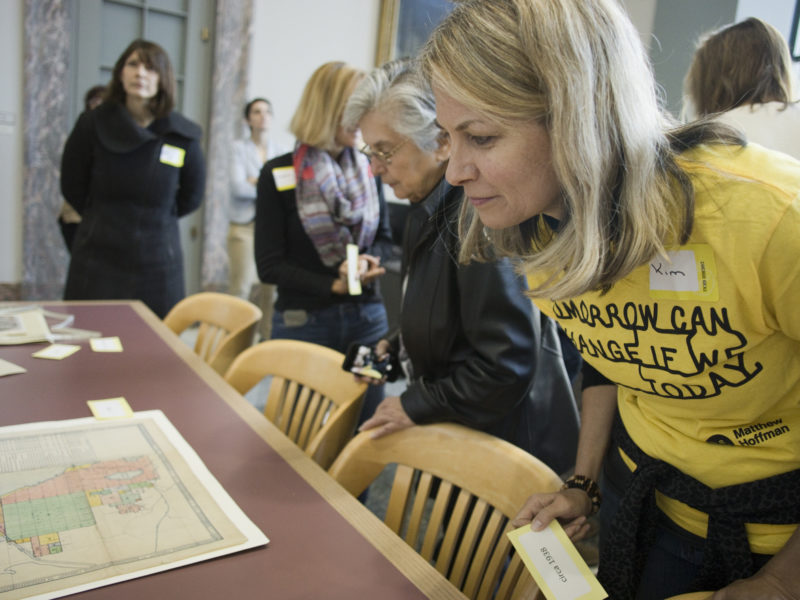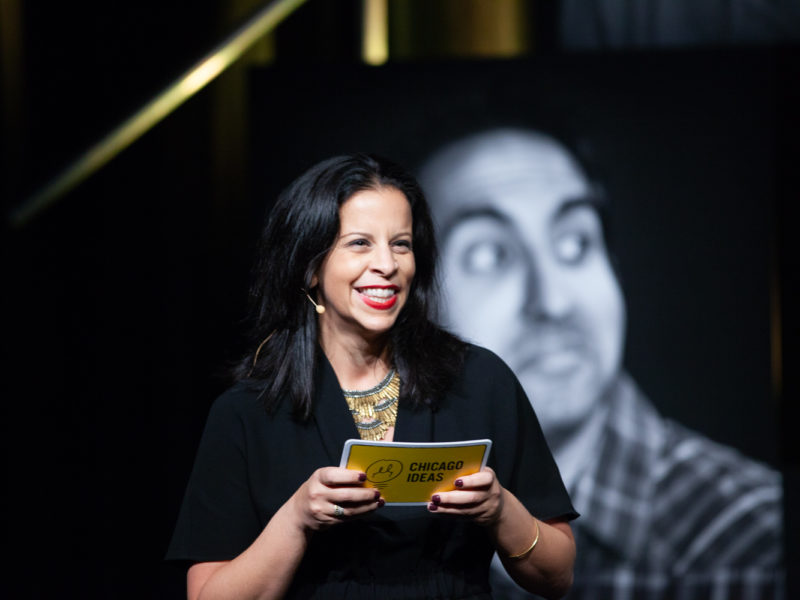
Backyard Brain’s Greg Gage
CIW 2014 speaker and Lab host Greg Gageis bringing neuroscience to the everyday individual with Backyard Brains, the organization he co-founded with fellow University of Michigan grad student Tim Marzullo. Backyard Brains brings neuroscience education to the everyday individual—of all ages—using hands-on experimental techniques and relying on neuroscience lab equipment.
Gage got his start as an electrical engineer, switching gears to neuroscience after attending a lecture that sparked his interest in the electrical wirings in our brains. Gage will be bringing his accessible neuroscience teachings to the CIW stage for Education: The End of SchoolOctober 15 and will be hosting a CIW Lab October 16. We talked to Gage about his passion for the mind, why cockroaches are “amazing creatures” and what attendees should expect at his CIW events.
What’s the impetus for Backyard Brains? What keeps your team working toward increasing neuroscience knowledge and education for the public?
People have a very, very limited knowledge about neuroscience and how their brains work. People have never even really heard of how a neuron sounds like—it has a very distinct sound. People don’t know how neurons encode information…. People know more about the structure of DNA, and people know the double helix. That’s a pretty advanced thing in science, but I think the public generally understands that. So we’d like that to happen in neuroscience as well.
So, is there a phrase in neuroscience that you think should be the “double helix” of neuroscience—the type of phrase any layperson can use in passing and understand the basic science behind?
Rate coding is one of the things—I would love to see people understand that, which is that you perceive the outside world at the rate at which neurons fire. It can be your nose from smelling something, it can be from your eyes from seeing something, from the hair in your ears from hearing something. All that gets immediately transferred into a language of spikes—spikes are like the Euro, it’s the common currency that the entire brain works on.
All of this is a pretty heavy neuroscience focus. What was it like to transition from electrical engineering to neuroscience? Did your technical skills feed into your studies?
Yes, very much so. The brain is an electrical organ, so the first thing you learn about when you come to neuroscience is about the voltage and currents that allow for electrical [activities] to occur, which can be difficult for a lot of biologists to understand. From an electrical engineering standpoint, that stuff is pretty straightforward.
It definitely seems like your own equipment—the Spikerbox—comes from a blend of your engineering and neuroscience backgrounds. (This device records spikes or action potentials, which in layman’s terms means that the device shows “how cells in the brain work to communicate”.) Talk a little bit about how you came on that invention.
That’s neural engineering…. I was in a neuroscience lab [in graduate school]. We were using tools in our lab, but because of the background that I had, I could see the $40,000 equipment we had probably could be made a little cheaper. [My colleagues and I] used to go out to classrooms…. Throughout that, we were coming up with ideas to make neuroscience more reachable to the public. One of the issues we had was that in our labs we were doing this cool stuff; we were actually recording the brain cells of living brain tissues. And then in the classes we were doing models of brains and talking about it and we were doing everything with some type of—like a jump rope would be the action potential and a bunch of Nerf balls would be the neurotransmitters. It was cool, but I suspect [the kids] weren’t learning anything.
So in 2009, we came up with a self-imposed engineering challenge: Can you record a spike for less than $100 dollars? We set to work to build a brain recording kit. The result of that was the Spikerbox.
How did you go from designing Spikerbox to launching Backyard Brains in 2009?
At some time, I switched over from actually going to go and pursue my postdoc somewhere to actually doing this little side project, which turned out to be taking up more and more of my time because people really wanted to have these kits. We launched the company in 2009, and we haven’t looked back since.
The goal of this company is to make anything that you find in an advanced tech lab at a graduate school accessible to anyone. If you’re creative and you have an interest, there should be no limit to what you can do.
One thing I noted about your website—that I feel I have to bring up—is that you seem to be dedicated to demonstrating neurological conceptsusing cockroaches. What is the neurological fascination with the roach?
The cockroach—they’re amazing creatures, amazing creatures. We have a large colony of roaches we keep for doing experiments with. We use them for a whole bunch of different things—we can record how they see things, how they feel things.
Let’s end with a little bit about your upcoming Lab, “Neuroscience for the 99%”. Will you be making the Spikerbox and all your other neuroscience tools available to participants?
The workshop that we’re going to do we’ll go through in absolute detail, and you’ll see the spikes, you’ll hear what they sound like. We’ll actually measure it—we’ll measure how fast the neurons fire. We’ll measure all of these things using…human-electric physiology.
It’ll be hands-on…. We’ll work as a team. I’m not going to do the experiments; they’re going to do the experiments. We’ll discuss them together as a group. They are the neuroscientists. They’ll be the electrophysiologists. They’ll be the anesthesiologists. They will be the data collectors. They will be the scientists in the end and be able to think critically about what they’ve just seen and come up with some hypotheses. It will be a fun experience.
It’ll be hands-on…. We’ll work as a team. I’m not going to do the experiments; they’re going to do the experiments. We’ll discuss them together as a group. They are the neuroscientists. They’ll be the electrophysiologists. They’ll be the anesthesiologists. They will be the data collectors. They will be the scientists in the end and be able to think critically about what they’ve just seen and come up with some hypotheses. It will be a fun experience.
Q&As are edited for clarity and length.





